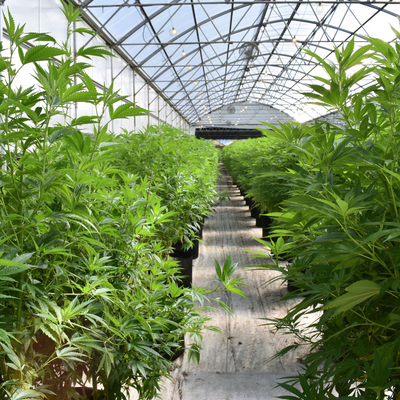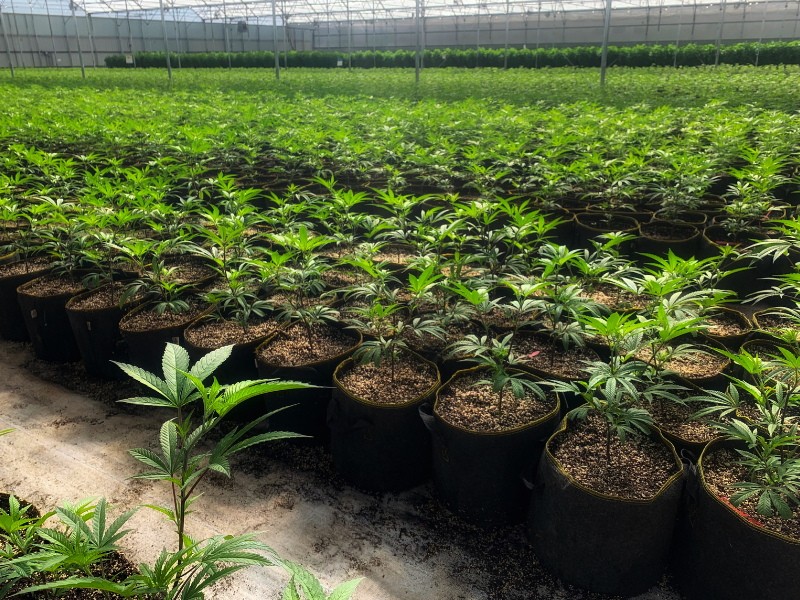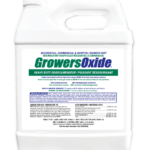HpLVD In Plants
HpLVD is an infectious RNA that causes what’s called ‘dudding’ in cannabis plants. This can be devastating to your plants and to your crop and grow rooms. HpLVD is an infectious pathogen, dependent on its host plant’s metabolism for replication, making grow rooms a breeding grounds for HpLVD – though this pathogen can also attack hops and other plants as well.
What Is HpLVD? (Hop Latent Viroid)
HpLVD (Hop Latent Viroid) causes stunting or dudding of plants (hops and cannabis commonly), and is also called the “Dudding disease.” Biologically, this pathogen is a single-stranded infectious RNA which typically appears on hops, but also is known to attack cannabis plants and grow rooms as well. The viroids themselves don’t always cause any symptoms, which means that HpLVD can go unnoticed for years, and transfer to new plants unknowingly.

How Do You Identify HpLVD?
The most common symptoms shown by plants are:
Stunted Growth
Reduced Vigor
Brittle stems with less mass of flowers
Stunted trichomes
HpLVD Symptoms In Cannabis Plants
It wasn’t until recently that several growers in California began noticing stunting of their Cannabis sativa plants with no other distinguishing symptoms. Multiple scientific studies concluded that what was happening was that the plants were infected with hop latent viroids, or HpLVD.
How can you best identify HpLVD in cannabis plants? Here are some of the telltale symptoms:
- Stunted plants
- Reduced vigor
- Reduced potency
- Stunted trichome production
- Abnormal branching
- Up to 50% less cannabinoid and terpene production
- Malformation or chlorosis of leaves
- Brittle stems
- Loss of quality and reduction in yields
At different stages you’ll notice different symptoms – in the vegetative state of your cannabis plants you may be able to identify HpLVD by smaller leaves on your plants, and during the flowering stage you may notice smaller or looser buds, and less trichome production in your plants.
Why Should You Treat Hop Latent Viroid In Plants And Grow Rooms?
If you don’t treat HpLVD, this pathogen can reduce a crop’s potency and yield – sometimes up to 25-50%. This can results in millions of dollars of losses in revenue.
Preventing Hop Latent Viroid In Your Grow Room
Typically HpLVD infections happen when an infected plant or clone is brought into a healthy grow facility, and then the pathogen spreads quickly to other plants.
While exact research about this pathogen’s transmission is ongoing, it is known that HpLVD can be spread through mechanical transmission – which occurs when pruning tools are used on an infected plant, and used again on a healthy plant. The pathogen can also spread through plant seeds, though the transmission rate is yet to be determined.
This pathogen can be difficult to detect and fully eradicate. Typically an infected garden or grow room will look healthy, but the plants are in fact asymptomatic. This presents a problem for gardeners, who may not know that HpLVD is present and spreading to other plants. Prevention is the best protection against Hop Latent Viroid.
How Do You Treat Hop Latent Viroid In Plants and Grow Rooms?
If you do happen to notice any of your plants have the symptoms of HpLVD listed above in this article, it’s best to rule it out with a screening test so that you can begin cleaning your plants, grow room, and equipment. If the results for HpLVD come back positive, it’s imperative to remove all of the infected plants immediately and any that may have come in contact with infected plants.
If you find all of your plants are infected with HpLVD, it’s time to begin treating your plants, your equipment, and your room for hop latent viroids. We’ve come up with a handy guide to disinfecting grow rooms which describes how best to dismantle your equipment, and what and where you should be focusing your cleaning on. While HpLVD can be devastating, it can also be treated with Growers Oxide.

What Can Be Done?
While diagnosing HpLVD is hard because it’s typically devoid of symptoms, a diagnostic screening test is the fastest and easiest way to confirm HpLVD in your plants and grow rooms. If the positive result is found, the infected plant must be immediately removed and disposed of, as well as any other plants which may have come into contact with that plant.
Unfortunately the HpLVD pathogen can remain dormant in plants which means these plants may be showing no symptoms but are still infectious to other plants even in this dormant state. This means that HpLVD can spread silently and infect otherwise healthy plants by transmission through pruning equipment or other grow room equipment. When plants are suffering from stresses – heat stress, food stresses, or bug outbreaks – this is when HpLVD can begin showing symptoms in asymptomatic plants.
TISSUE CULTURE
Tissue culture uses a specific treatment that eliminates the HpLVD virus from your plants. This process is best for special strains, mother plants, or if all of your plants are infected.
SAFETY TIPS
The best way to prevent HpLVD in your plants and grow room is to adequately sanitize your equipment. Unfortunately as HpLVD cannot always be detected easily, prevention is the best key towards keeping this pathogen at bay in your grow rooms, and ensuring your plants are healthy and hearty through proper grow room disinfection practices.
Prevent HpLVD With Growers Oxide
By keeping your grow room disinfected, you’re eradicating any possibility of growth or transmission for HpLVD between plants and equipment. Growers Oxide is the only grow room disinfectant that’s powerful enough to prevent and get rid of hop latent viroids. Shop Growers Oxide today for your grow rooms!

What Is Growers Oxide?
Growers Oxide is a safe and clean disinfectant designed for grow rooms, grow tents, greenhouses, nurseries and more. Growers Oxide keeps your facilities clean and safe from bacterial and microscopic pathogens, keeping your production running smoothly.
Growers Oxide kills mold and eliminates odours safely and effectively. It even eliminates viruses and bacteria from your environment to create a safer public space. It is not a harsh chemical and it doesn’t leave harmful residue.
Growers Oxide is a ready-to-use formula that is gentle to users but tough on germs. It is NSF Certified for food contact surfaces and listed as a category IV (lowest approved category) pesticide with the EPA.

